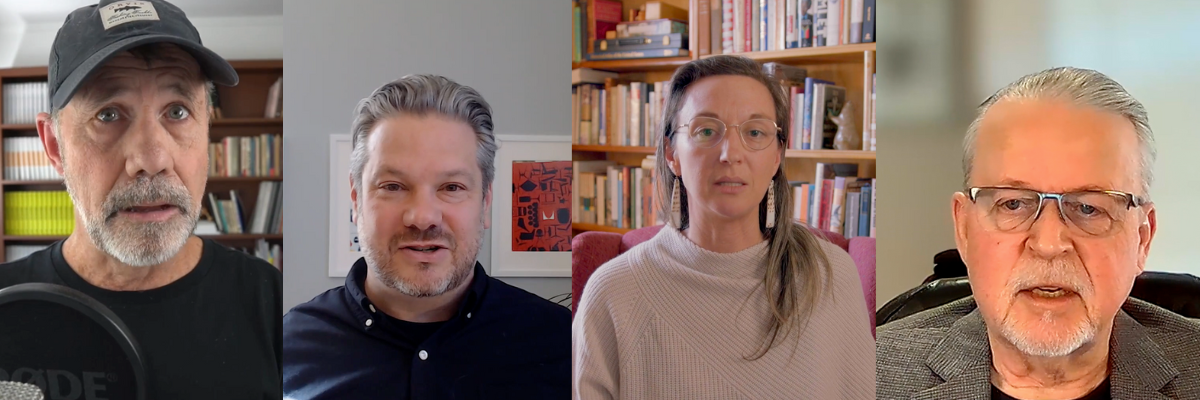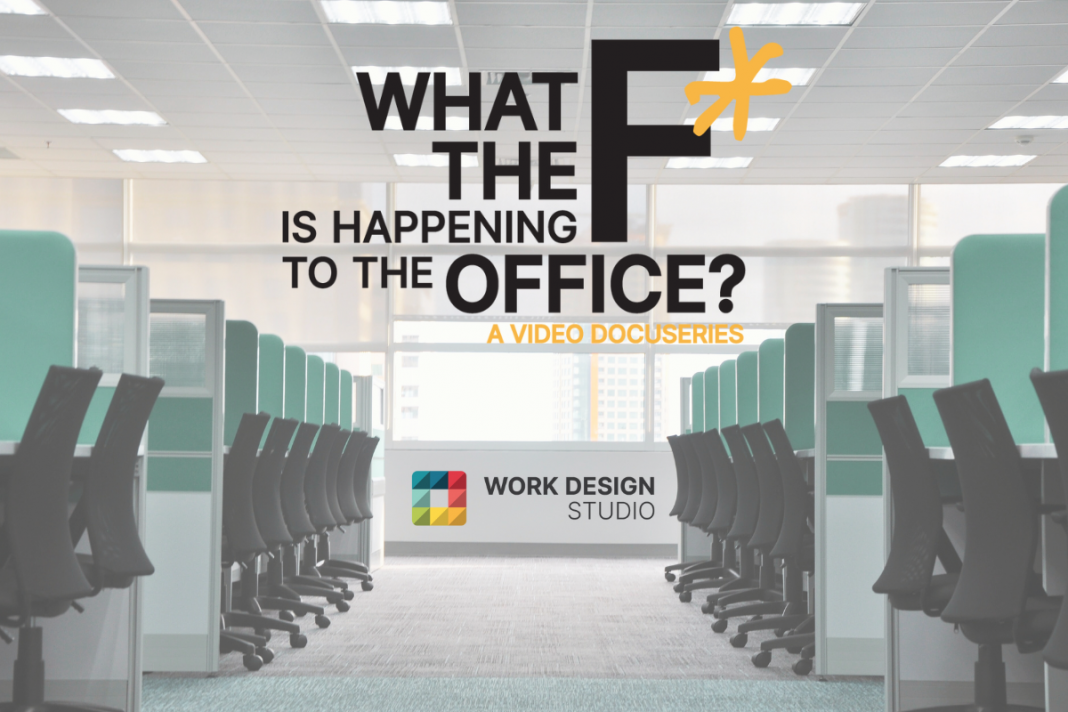WDM’s Founder and Executive Publisher, Bob Fox shares the inspiration for our new video series, how it’s evolved, and where it’s headed.
Setting the Stage
The work environment has undergone an astonishing transformation, propelling us into a new era that promises to revolutionize the way we work. The COVID-19 pandemic acted as a catalyst, creating a seismic shift, offering us an unparalleled opportunity to rethink the status quo. Yet, even as the tides of change surge around us, many are clinging to the past, yearning for the familiarity of the pre-pandemic world. Unfortunately, this reluctance is taking its toll on the commercial office market, which is grappling with mounting challenges.
As a professional dedicated to design and an advocate for the future of work, I’ve been closely watching these developments which has inspired Work Design Magazine’s groundbreaking video series we’ve appropriately called “What the F is Happening to the Office?” This series is a journey of discovery through conversations with experts who offer profound insights into not just how we work, but how we can work smarter, more efficiently, and with creativity. It delves into the intricate aspects that shape our work environments, challenging designers and workplace design makers alike to consider a multitude of factors in the ever-evolving physical workspace.

The Age of Divergence
One of the challenges we face is the polarization that has been occurring within the work environment. It forces us to confront a pivotal question: How do we perceive individuals in this new landscape? Do we fully embrace the extraordinary diversity of talents and perspectives that each of us brings to the table? Do we trust our colleagues and empower them to make choices about where and when they work? Or do we, as organizations, insist on dictating our work lives, when where and how we show up for work, avoiding individuality in the process?
The stark division is evident in the return-to-office debate, where leadership calls for a physical return, while employees assert their right to choose where and when they are most productive. Economic shifts only amplify the complexity of this tug-of-war, yet the underlying divergence persists.
The field of workplace design…must now expand its horizons to address intangible, inherently human concerns.
Traditionally, we’ve seen both sides of the coin, recognizing the inherent value in each perspective. However, it seems we are increasingly fixated on just one side, neglecting the untapped potential of the other. It’s the one coin that has value! We have ushered in a new era, one I will call “The Age of Divergence.”
The field of workplace design, once confined to creatively solving physical workspace problems, must now expand its horizons to address intangible, inherently human concerns. These encompass a rich tapestry of issues such as quality of life, trust, equity, diversity, leadership, choice, psychological and emotional well-being, mental health, neurodiversity, culture, behavior, and more. When we factor in the rapidly evolving landscape of technology and AI, the complexity of our task grows exponentially.
Our work environments have become intricate ecosystems, while designers find themselves navigating uncharted waters, lacking the comprehensive training needed to address these multifaceted, intangible and abstract challenges required for creating a vibrant, healthy contemporary work environment. Traditional workspaces, very slow to change, struggle to keep pace in a world of accelerating transformation.
We Know This Much
The traditional metrics and conventions governing office spaces have become obsolete. Gone are the days when office space was treated as real estate, measured solely in square footage. Metrics like square feet per person, once relevant, have lost their meaning. If you still rely on such metrics, chances are that enthusiasm for returning to the office is in short supply. Today, the work environment is no longer a static space; it’s a dynamic tool, a catalyst for an organization’s mission, and it should correspondingly adapt to the needs of the people who power that mission.
Confronting these multifaceted challenges requires strategic prioritization, for there are no established traditions, no universal standards, and no quick fixes. The road ahead demands inclusive conversations aimed at addressing as many of these issues as possible.
Every organization is a unique tapestry of culture, goals, and aspirations, and the work environment should mirror and bolster those distinct qualities. While some organizations may thrive with straightforward office spaces, others will require innovative solutions to attract top talent and maximize performance.
What We Aim to Uncover
Our mission, encapsulated in “What the F is Happening to the Office?” is to understand this landscape of possibilities. The series consists of unbiased of conversations with experts, delving into a wide range of topics that will mold our work environments. Our sincere endeavor is to uncover the path toward creating the most supportive, healthy, sustainable, and high-performing spaces for individuals and teams to collaborate and innovate.
The work environment, like our technology, is a dynamic tool, constantly evolving. It must be updated, adapted, and fine-tuned just like any other essential component of our lives.
The work environment, like our technology, is a dynamic tool, constantly evolving.
Our most precious resource is our people, they are the driving force behind productivity. Therefore, the work environment must be designed not only to attract but to engage, support, and fully empower them in their work. Anything less is an inefficient use of time and resources.
Instead of fixating on how to compel people back to the office or what amenities to offer, We should focus on a more profound question: How can we work better together?
This is not merely a real estate challenge – it’s about the dynamic engagement with people. Can leadership effectively communicate goals, build trust, and create an inclusive work environment that empowers individuals and teams to choose how they achieve the organization’s objectives while excelling in their own unique ways?
Where We Are Headed
Many questions and challenges remain and we hope to provide insights to those issues to solve those problems creatively. We have an opportunity unlike ever before to reconsider our work environments. The future of work is not just about going back to an office – it’s about embracing a future full of possibilities.
I’m very excited about the possibilities and look forward to seeing innovative new work environments filled with people and teams enthusiastic and passionate about what they do.


